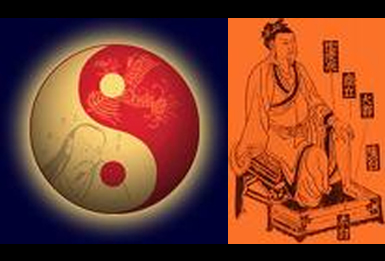



Traditional Chinese Medicine Traditional Chinese Medicine refers to a number of practices including acupuncture, acupressure, herbal formulas, Tui Na(Chinese massage) and Cupping therapy. Traditionally, the theory of Chinese Medicine was a theory of nature, health and disease. The forces underlying the theory are described as: • Yin and Yang, According to Chinese medicine theory, human body is a dynamic environment of interrelating and interconnecting networks. Some of these networks are obvious and others are more subtle. Over the centuries, Traditional Chinese Medicine has mapped out the subtle networks and interrelationships that reveal our bodies to be dynamic cellular ecosystems. When all of the underlying forces and systems are in harmony and balance, health can be achieved and maintained. |
In acupuncture, fine needles are inserted at specific points to stimulate, disperse, and regulate the flow of chi, or vital energy, and restore a healthy energy balance. ... |
In China, the practice and teaching of Traditional Chinese Medicine (TCM) has a history of more than 5000 years. The earliest text on the subject, The Yellow Emperor's Classic of Internal Medicine (Huang Ti Nei Jing ), said to be written in the 1st and 2nd centuries BC, and it is still relevant to the teaching of acupuncture and Chinese herbal medicine today. In traditional terms, acupuncture is the practice of correcting the flow of Qi by inserting sterile, slender, solid, high grade surgical stainless steel needles into designated points on the body along meridians. These pre-sterilized and disposable needles are used “only once”. Acupuncture was first developed during the Chou dynasty (1030 BC to 221 BC), as a system of therapy involving the needling of precise points, the acupoints, on the body that were derived from the philosophical concepts of humanity and its relationship to the natural environment. The early TCM practitioners found that upon simulating these points a cascade of positive changes occur in the body. From then on, acupuncture points (acupoints) have been systematically tried and observed for functions and treatment efficacy. This art was started by the use of what the Chinese call “ashi” points, or points where there is pain. Bones, sharpened stones, or bamboos were inserted into these “ashi acupuncture point” and it was found to give relief. Over the next few centuries, Qigong practitioners, doctors, and shamans began to see and map out the system of energetic meridians that course throughout our body. To date this is still being refined. Acupoint are specific points on the body which give particular access to this energetic system, performing different functions depending on their locations and the patterns of disease disharmony involved. |
|
